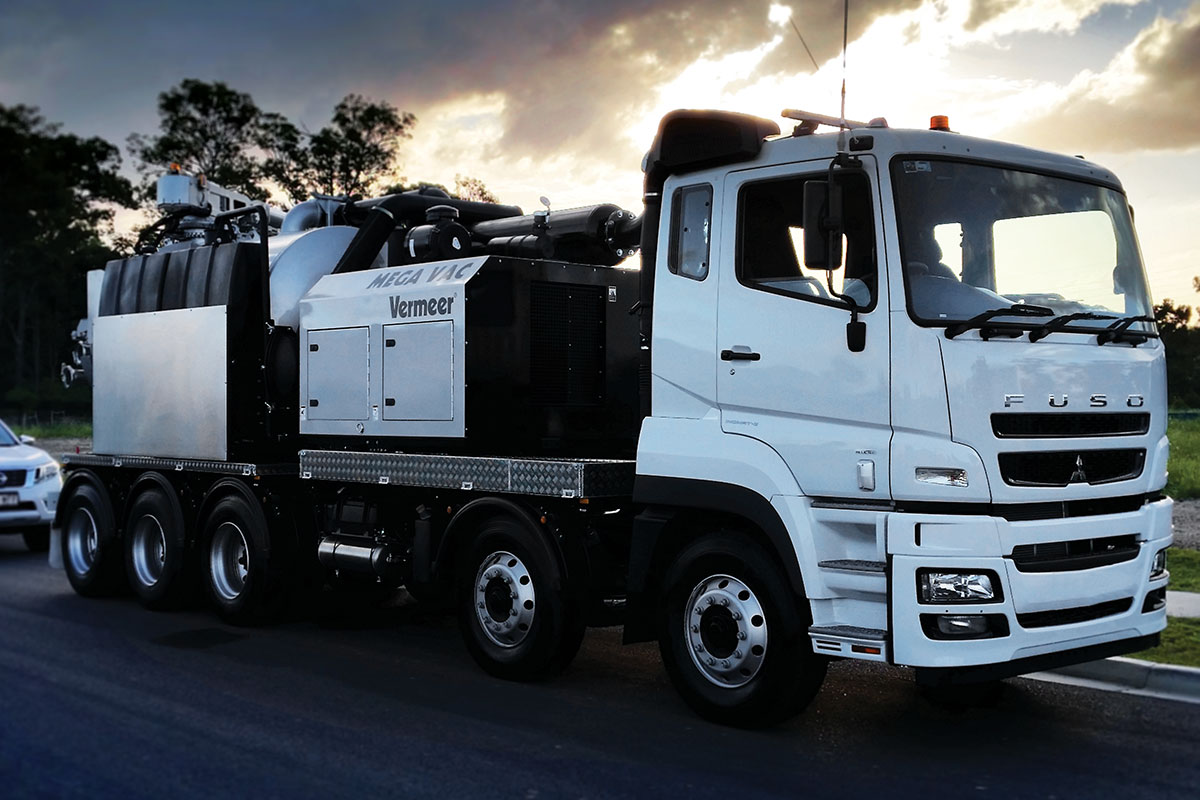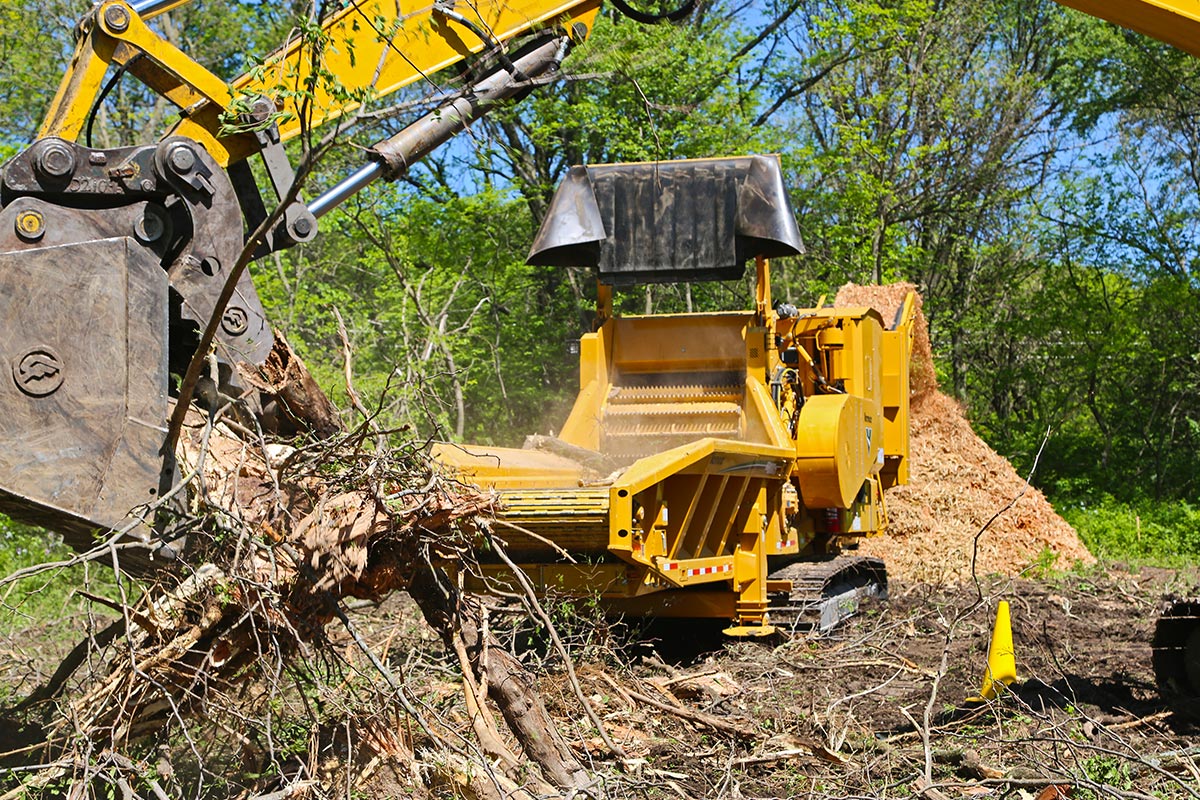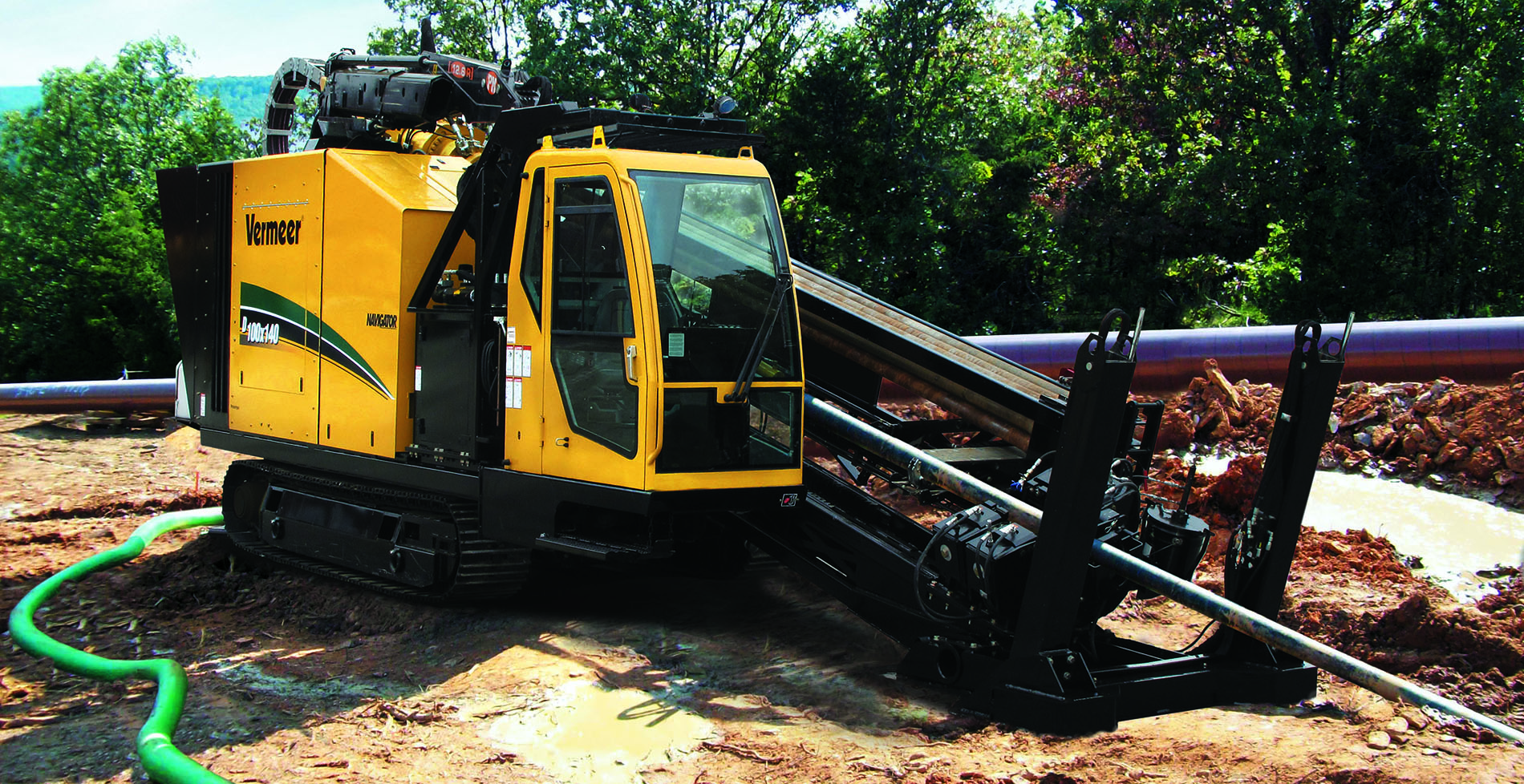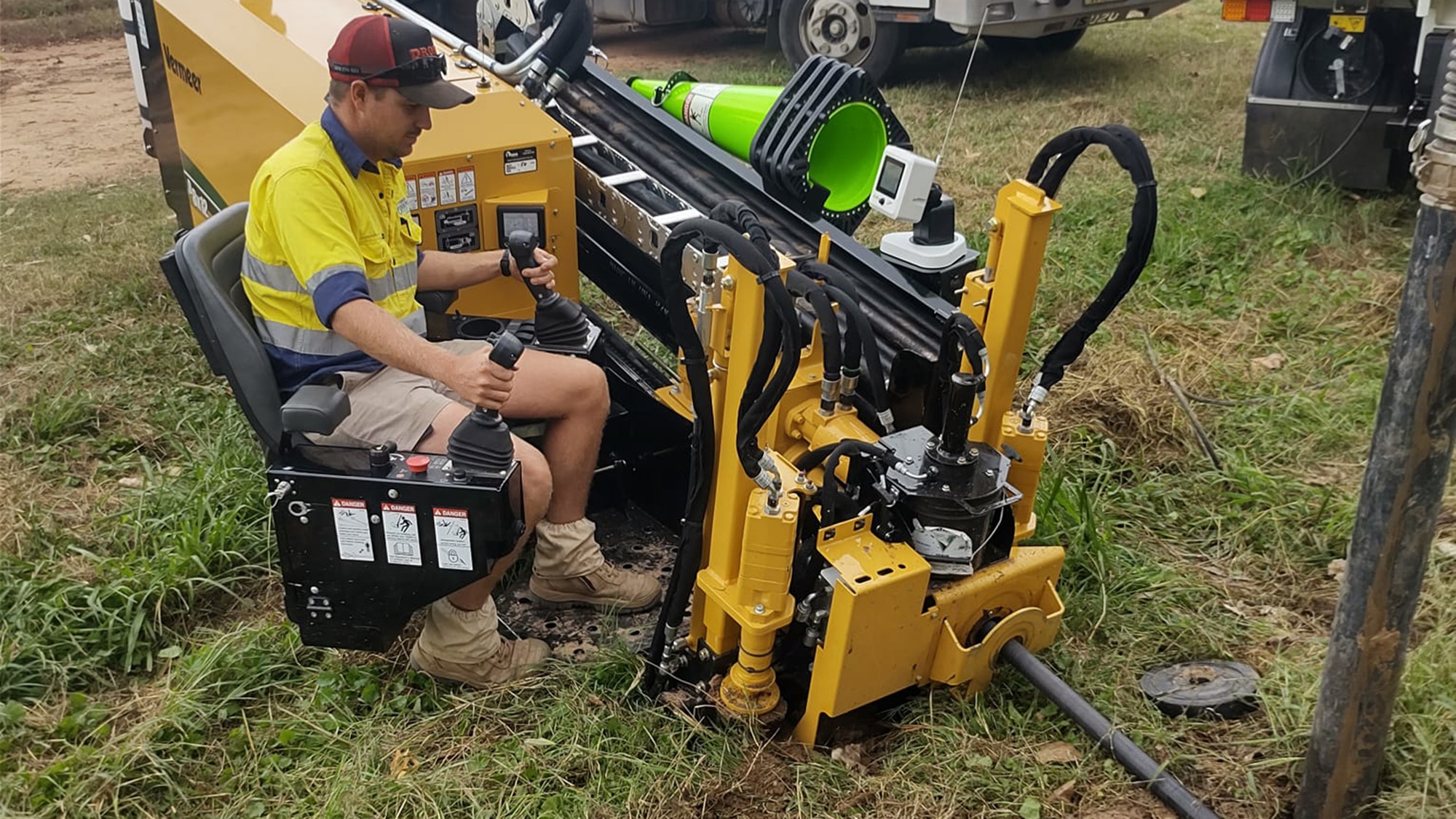The demand for non-destructive digging (‘NDD’) solutions has seen a surge in demand for vacuum excavation across a wide range of industries and applications. This growth has been driven by factors including the increased mandating of NDD by primary contractors and municipalities, occupational health and safety regulation, the roll-out of fibre networks and availability of vacuum excavators in an increasing array of sizes and configurations.
Often, once a contractor or municipality buys their first vacuum excavator, it’s use expands to applications beyond the original intended use, realising new revenue streams and/or efficiencies for the organisation.
Read on as Vermeer Australia National Marketing Manager Steve Reeves discusses some of the many applications of, and technologies used, in vacuum excavation in the Australian market.
Applications of vacuum excavation
Utility and fibre installation
Utility location or ‘Potholing’
Since vacuum excavators use air or water at ‘non-destructive’ pressures, they are perfect for excavation to locate existing utilities, and in fibre rollouts this is one of their most common applications in preparation for cable installation.
Horizontal Directional Drilling (‘HDD’) contractors use vacuum excavators to ‘pothole’ and reveal utilities, often in conjunction with an electronic utility locator, for 100% depth calculation of utilities before drilling.
Damaging existing utilities can be costly in terms of project downtime and potentially significant fines from utility owners. The relatively low pressure water and air used in vacuum excavation will not damage existing utilities like a backhoe, compact excavator or shovel. In practice, the air and water clean around the existing utilities, giving the operator a clear view.
Horizontal Directional Drilling (‘HDD’) rig support
Vacuum excavators are often used to make entry and exit pits and to remove drilling mud both during and at the conclusion of a HDD shot. The speed of excavation and mud recovery can offer an increase to daily productivity that easily offsets the plant costs.
Hauling rope and cable
A small jetter hose attached to high pressure water enables contractors to clean out and remove blockages in existing infrastructure so that rope and cable can be hauled. When the time comes to haul, a ‘parachute’ attached to the rope enables the vacuum excavator to suck rope or cable through pipes in a fraction of the time it takes with a traditional rod system.
Communications pit clean-out and dewatering
Over time, and as a result of rainfall and flooding, inspection pits often fill with mud, water and debris. Vacuum excavators are used to clean pits so that operators can gain access to the utilities without risk of damage to the multitude of infrastructure that often exists in these installations.
Pit installation, upgrade and removal
Where a new pit is to be installed, an existing pit extended, or a pit removed or replaced, a vacuum excavator is used to excavate the area without risk of damage to underground assets or disturbance of harmful materials such as asbestos. When excavating around harmful materials such as asbestos the use of special HEPA vacuum excavator filters is typically recommended.
Civil works
Precision excavation around existing infrastructure
The need for precise excavation around sensitive infrastructure, with the added bonus of immediate spoil removal, has introduced a lot of our operators within the civil contracting industry to the benefits of vacuum excavation
Post hole digging
An expanding application for vacuum excavators is their use to excavate post holes for road guard rails and traffic signs, as well as small excavation projects. If you need a larger hole, you can repeat the process in spots. Using a vacuum helps eliminate the chance of damaging an existing underground line and requires less labor and time than using an auger.
Today’s trailer-mounted vacuum excavators are well-suited to these applications due to their portability, and as only one person is required to operate the unit.
Emergency response clean up and dewatering
Today’s stringent OH&S requirements necessitate the ability for immediate containment and clean up of spills and other situations that may endanger workers, and traditional means –shovels, excavators etc – can introduce a range of additional risks. Many operators are utilising vacuum excavators for cleanup of waste, debris and other contaminants to ensure compliance to legislation and the wellbeing of their workers.
Exercising water valves and hydrants
Routine maintenance of water valves and hydrants, both cleaning of systems and opening of seized valves, can be performed efficiently via vacuum excavation, the latter requiring a special accessory designed for the purpose.
Mining & resources
Removal of drilling mud
The increased prevalence of sump-less drilling has necessitated a means for collection and remote disposal of drilling mud and other spoil, a task for which Vermeer’s large capacity vacuum excavators have proven ideal. The combination of high CFM and large tank capacity mean fewer trips to dispose of the spoil and less down time in general.
Conveyor system clean up
Traditional methods, typically shovels, used to clean up spills on mine conveyer systems require shutdown of the conveyor and thus down time and risk to workers. Vacuum excavators are being used increasingly to eliminates manual handling and reduce down time and risk associated to this task. The addition of Remotely Operated Vehicles (ROVs) to convey the hose and wand into confined or high-risk environments, as well as ancillaries such as video inspection cameras, further enhances a vacuum excavator’s suitability for this application.
Open Space, Maintenance and Environmental
Arboriculture and tree care
It’s inherently non-destructive nature means that vacuum excavation is an ideal means of excavating around sensistive trees and infrastructure. The use of appropriate vac nozzles and water pressure enables excavation without damage to trees for tasks such as root inspection as part of pest insect and disease management, root deflector/ barrier installations, selective root pruning and isolation of root ball in transplanting. As a means of excavating for tree planting there is the added benefit of water being introduced as part of the process.
Landscaping and open spaces maintenance
The versatile and non-destructive nature of vacuum excavation leads itself to many applications here; landscaping applications include the installation of irrigation systems and their location and exposure for maintenance, installation of landscape lighting, retaining walls, and general excavation as part of hardscape construction.
As a tool for maintenance it is ideal for high pressure water blasting, gutter cleaning and leaf fall removal, debris and liquid waste cleanup, and countless other specialised applications such as removal of roofing insulation material and cleaning of roof cavities.
Common vacuum excavator configurations
Trailer-mounted vacuum excavators
Trailer-mounted vacuum excavators offer great flexibility in applications where lower volumes of spoil are expected and offer the flexibility to use existing vehicle fleet. These units have all of the durability of larger units, and with portability and flexibility that enables them to take on a diverse range of tasks.
Truck-mounted vacuum excavators
Vacuum trucks typically feature spoil tank capacities ranging from 1,000 to 11,400 litres and a range of configurations to suit a wide range of non-destructive digging and liquid waste management applications. Their modular skid design offers the flexibility to optimise weight distribution for handling high volumes of spoil.
Vacuum excavator components and technologies
Understanding the role of key components in the effectiveness of a vacuum excavator for different applications is key to getting the right NDD setup for your operation. We’ve provided an overview of the components and technologies in typical vac ex units below. You can always contact your local Vermeer product specialist for detailed information on the vacuum excavation solution that will best meet your needs.
Key components
Power pack
Noise levels are a key consideration on noise-sensitive job sites. Integrated silencing systems offer quieter operation and will keep you in favour with the site management.
Blower (CFM)
The air flow and suction rating of the blower determines the volume and weight of spoil that can be lifted, and from what depth. Blower output is typically described in cubic feet per minute or CFM, and is a key metric when you are assessing the performance of a vacuum excavator.
Vacuum
The other key metric that determines how much spoil can be lifted by a vacuum excavator is the suction capability of the blower, typically described in inches of mercury or inHg. If you’re lifting dense spoil or lifting spoil vertically over greater distances you will typically need a high vacuum rating.
Spoil tank
Proximity to authorised dumping stations and carrying capacity of the intended vehicle are the two key considerations when choosing spoil tank sizes. Dumping costs and time spent in transit can add up.
Water Pump
Water pumps are available in a range of pressure capabilities, typically from 3000 to 5000psi, and pressure can be reduced to suit different applications (typically in relation to the sensitivity of the utilities you are excavating around).
Water tanks
Placement of tanks is important for weight distribution, and their capacity should be matched to the spoil tank size.
Wands and accessories
There are a range of wands and nozzles available, including combination wands that enable one-person excavation, as well as specialist tools such as jetters and parachutes. See your Vermeer product specialist for advice on the right tools for your application.
Filtration system
The two common types of filtration are baghouse and cyclonic style. Placement of the filtration system is a key but often-overlooked consideration, as it has implications re work site height regulations and recommended manual handling practices.
Booms
A boom enables easier manipulation of the suction hose and reduces manual handling risk. Remote control hydraulic booms offer the ultimate in efficiency and reduced manpower requirements. The sectional diameter of a boom is a key factor in avoiding blockages; a boom that increases in diameter as it meets the spoil tank will significantly reduce the instance of time-consuming blockages.
Door mechanisms
Door mechanisms should ideally have no in-tank hydraulic components so as to avoid degradation from spoil and the possibility of spoil contamination if a hydraulic component should fail.
Automated shut-off systems
This feature reduces the risk of material entering the blower if the spoil tank becomes overfull; ideally this system should have redundancy (such as both and electronic and mechanical activation) that turns off the vacuum flow to protect the blower from ingress of spoil.
Reverse air-flow
On machines fitted with this feature the direction of air flow from the blower can be reversed, creating internal pressure that forces spoil from the tank and can also be used to clear a blockage in the suction hose.
Emerging technologies
Vacuum excavation ROVs
Remotely Operated Vehicles (ROVs) enable vacuum excavation, as well as cleaning and visual inspection of utilities and other assets, in high-risk environments. ROVs can reduce the risk to human operators and the expense of work in high-risk environments, as well as enable access to work in areas previously inaccessible to humans.

 MyDealer:
MyDealer:


